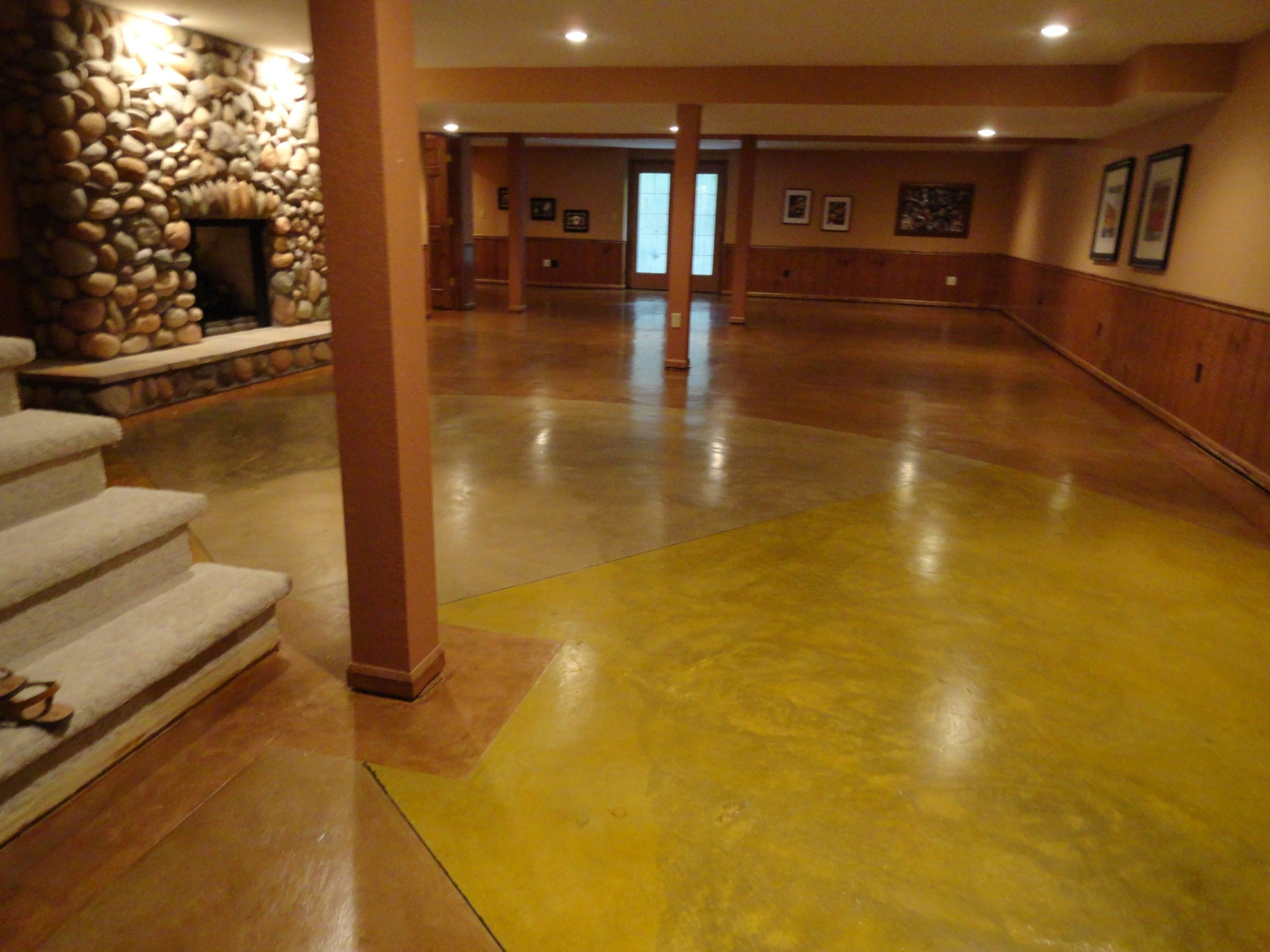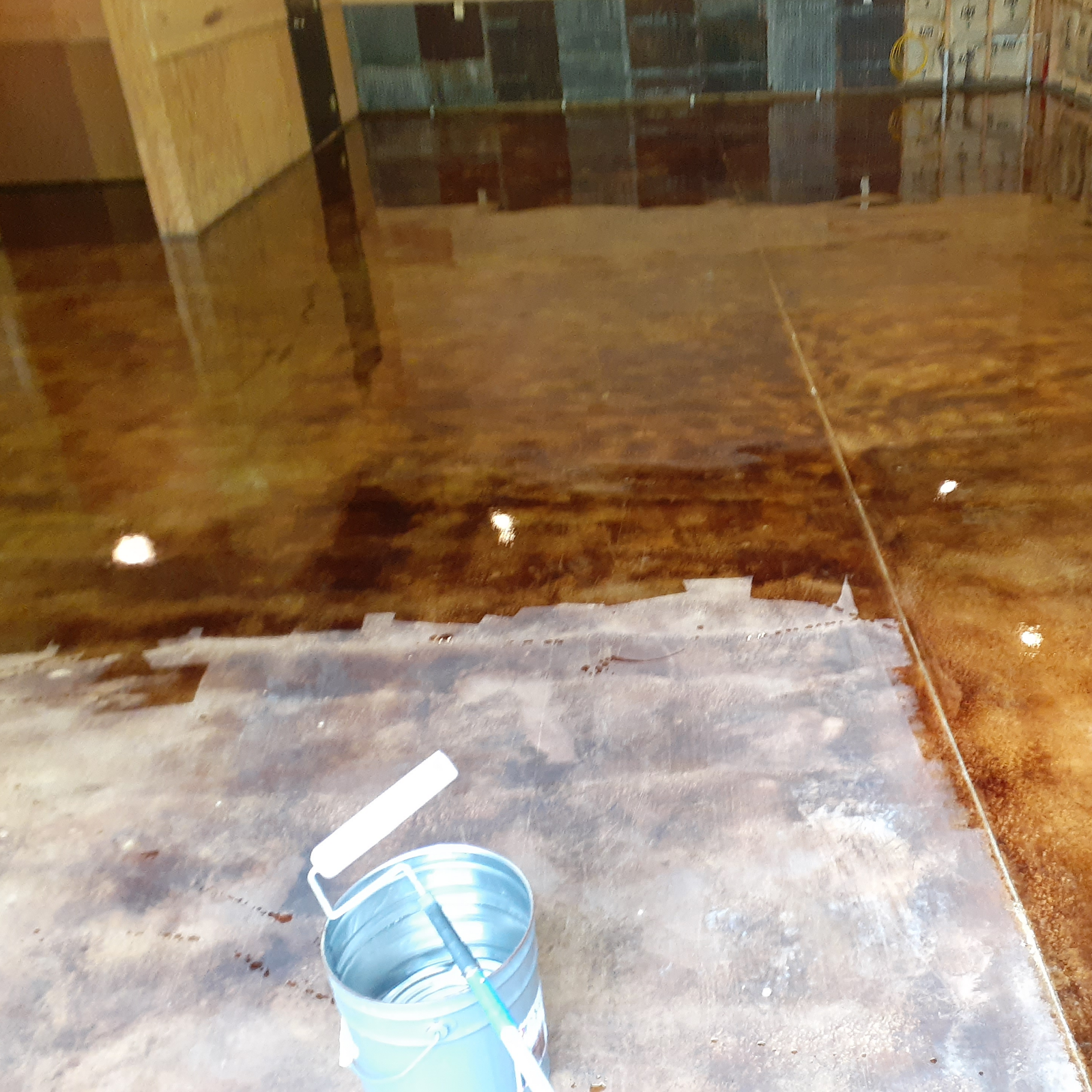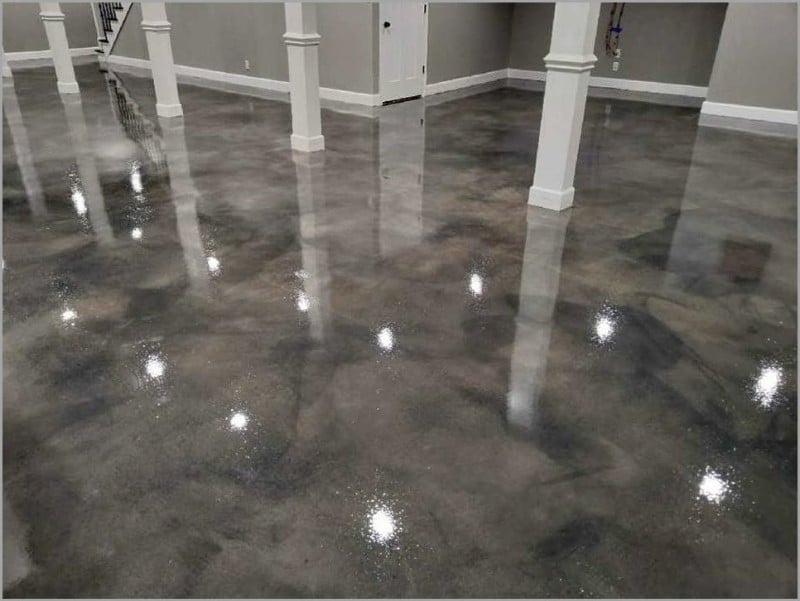All Concerning Stained Concrete: A Comprehensive Guide to Its Advantages and Applications
Stained concrete has emerged as a prominent selection for both household and business spaces. Its ability to combine visual allure with practicality makes it a fascinating alternative. Various discoloration techniques use a variety of shades and coatings, permitting personalization. Nevertheless, the advantages expand past look. Understanding its applications and maintenance requirements is vital for any individual considering this functional product. The nuances of stained concrete invite further exploration.
What Is Stained Concrete?

Staining can be applied to different surfaces, consisting of floorings, driveways, and patio areas, making it a flexible choice for both indoor and exterior spaces. The treatment can attain a variety of looks, from earthy tones to bold, modern-day designs. Unlike paint, stained concrete keeps its look with time, as it ends up being an indispensable part of the concrete itself. Generally, stained concrete acts as a reliable technique for changing common concrete right into aesthetically striking surfaces.
Benefits of Stained Concrete
Stained concrete deals substantial advantages, specifically in aesthetic charm and resilience - local stained concrete. Its vibrant shades and unique patterns boost the visual charm of any kind of area, making it a prominent choice for both residential and industrial applications. Additionally, the longevity of stained concrete assurances that it continues to be a functional financial investment gradually, withstanding damage
Aesthetic Appeal
One of one of the most engaging benefits of using stained concrete is its impressive visual appeal. Stained concrete offers a special and flexible look that can match various design styles, from modern-day to rustic. The infusion of vibrant colors and detailed patterns permits homeowners and developers to develop tailored surface areas that can boost the overall ambiance of an area. Unlike traditional floor covering options, stained concrete can simulate the appearance of natural stone or sleek marble, offering a high end look without the connected prices. Additionally, the shiny coating alternatives can show light, more lightening up interiors. This adaptability makes stained concrete a popular option for both household and commercial applications, where visual effect is vital.
Toughness and Longevity
The excellent visual top qualities of stained concrete are complemented by its remarkable sturdiness and longevity - stained concrete company. Stained concrete surfaces are resistant to deterioration, making them suitable for high-traffic areas both inside your home and outdoors. Their robust nature suggests they can endure rough climate conditions, consisting of extreme temperatures, rainfall, and UV direct exposure, without significant degradation. On top of that, stained concrete requires minimal maintenance contrasted to other flooring choices, as it does not need regular sealing or refinishing. This long life not just lowers substitute prices yet additionally adds to a sustainable structure technique. Generally, stained concrete offers an enduring service that integrates visual allure with sensible advantages, guaranteeing its worth in time
Different Sorts Of Staining Techniques
Different discoloration strategies can substantially influence the aesthetic qualities of concrete surfaces. The three primary approaches consist of acid staining, which reacts chemically with the concrete, water-based staining, which provides a wider variety of colors, and overlay staining alternatives that offer a fresh surface. Each strategy has distinct attributes and applications that satisfy numerous layout choices and job requirements.
Acid Discoloration Technique
Just how can house owners transform ordinary concrete surface areas right into visually striking features? One efficient approach is acid staining, a popular strategy that boosts the natural appeal of concrete. This process entails applying a remedy of water, hydrochloric acid, and metallic salts to the concrete surface area. As the acid responds with the lime existing in the concrete, it produces abundant, variegated shades that resemble marble or stone. Acid staining is known for its longevity and resistance to fading, making it a durable choice for both indoor and outdoor applications. It is essential to keep in mind that the outcomes can differ based on the initial concrete shade and structure. Correct application and sealing are vital for attaining the preferred visual and durability
Water-Based Discoloration Strategy
A prominent alternative to acid staining, the water-based staining technique offers property owners a versatile method to enhance concrete surfaces. This technique uses water-soluble dyes and pigments, allowing for a wide variety of shades and surfaces. Unlike acid spots, water-based spots can be applied to unsealed concrete and provide a less complicated cleaning process. The outcomes can attain an extra consistent appearance and can be layered to produce unique results. In addition, water-based stains are normally less harmful and produce fewer unstable organic compounds (VOCs), making them much more ecologically friendly. Property owners might value the ability to customize their concrete surface areas with numerous tones, enabling imaginative expression while maintaining durability and long life in their floor covering options.
Overlay Discoloration Options
Various overlay staining alternatives exist for house owners wanting to invigorate their concrete surface areas. One prominent selection is acid discoloration, which reacts chemically with the concrete to generate rich, variegated shades. An additional option is water-based discoloration, supplying a more comprehensive shade palette and much easier application. In addition, concrete overlays can be incorporated with stencils for complex designs, improving looks. For an extra distinctive coating, homeowners may think about utilizing stamped overlays that mimic all-natural materials like rock or tile. Each method supplies special advantages, from toughness to personalization, permitting a tailored touch. Inevitably, the choice of overlay discoloration relies on the preferred appearance and the condition of the existing concrete, making sure a freshened and enticing surface area.
Applications of Stained Concrete
Stained concrete offers a flexible option for various applications, boosting both aesthetic appeal and performance. This material is frequently used in residential, business, and commercial settings, making it a prominent selection among designers and developers. In homes, stained concrete can offer as fashionable flooring or exterior patios, providing an innovative look while remaining long lasting.
In industrial areas, such as stores and restaurants, stained concrete adds to a contemporary ambiance and can endure hefty foot traffic. Furthermore, stained concrete is progressively used in public spaces like parks and pathways, where its capability to mimic natural rock or other products adds visual rate of interest.
Additionally, stained concrete is excellent for pool decks and driveways, offering a slip-resistant surface that is easy to maintain. Overall, the flexibility of stained concrete makes it appropriate for various atmospheres, dealing with varied tastes and navigate here needs.
Upkeep and Take Care Of Stained Concrete
Proper maintenance ensures the longevity and appeal of stained concrete surfaces. Routine cleansing is important; using a mild detergent and water with click here for more a soft-bristle brush aids remove dirt and gunk without damaging the coating. It is advisable to prevent rough chemicals that can remove away the discolor or sealer.
Sealing stained concrete is vital for defense versus moisture, discolorations, and use. A premium sealant should be reapplied every one to 3 years, depending upon the traffic and direct exposure the surface withstands. Additionally, addressing spills quickly will avoid discoloration and discoloration.

Price Considerations for Stained Concrete Projects
When intending a stained concrete task, spending plan factors to consider play an essential duty in identifying the total cost. The costs connected with stained concrete can vary substantially based on numerous variables. The size of the area to be stained straight influences material and labor prices. Larger spaces will normally require even more sources. Second, the kind of discolor picked-- acid-based or water-based-- can influence prices, with acid spots usually being much more pricey. Additionally, the intricacy of the layout, consisting of patterns or several shades, can increase labor costs. Preparation work, such as cleaning and grinding the concrete surface area, includes to the preliminary expenses. The selection in between DIY installation and employing an expert specialist will certainly additionally influence the spending plan. Comprehending these aspects enables property owners to make informed financial decisions concerning their stained concrete projects, ensuring they attain the preferred visual within their economic methods.
Tips for Choosing the Right Stained Concrete for Your Space
Picking the ideal stained concrete for a details room entails cautious consideration of numerous variables past simply spending plan. One should review the desired use of the area. High-traffic zones may need more sturdy surfaces, while decorative applications can prioritize visual appeals.
The shade combination is another important element; the chosen tones must balance with existing decor and lights. It's likewise essential to consider the surface texture, as smooth coatings can enhance refinement, while textured alternatives might assure security in wet locations.
Regional environment and environmental problems play a substantial role in the long life and upkeep of stained concrete, affecting the choice of sealers and coatings.
Ultimately, consulting with experts can provide important understandings customized to specific demands, assuring the choice of the optimal stained concrete that lines up with both functionality and design.

Often Asked Concerns
Can Stained Concrete Be Applied Over Existing Flooring?
Stained concrete can certainly be used over existing flooring, gave the surface area is steady and effectively prepared. This technique permits for an aesthetic upgrade without the requirement for complete removal of helpful site the original flooring products.
For How Long Does Stained Concrete Last?
Stained concrete can last for decades when correctly maintained. Elements such as web traffic, ecological conditions, and application methods substantially influence its durability, with several installations continuing to be lively and intact for 10 to three decades.
Is Stained Concrete Slippery When Wet?
Stained concrete can be unsafe when wet, as the surface may create a smooth surface. Using non-slip additives or textured coatings can mitigate this issue, boosting safety and security without endangering the visual appeal of the concrete.
Can I Tarnish Concrete Myself, or Should I Hire an Expert?
The decision to stain concrete directly or employ an expert joints on ability level and job complexity. While do it yourself staining can save cash, specialists guarantee suitable outcomes, specifically for complex layouts or huge surfaces.
What Color styles Are Readily Available for Stained Concrete?
The selection of colors readily available for stained concrete includes natural tones like browns and tans, lively tones such as reds and blues, and softer shades like pastels. This scheme permits imaginative, personalized layout alternatives.